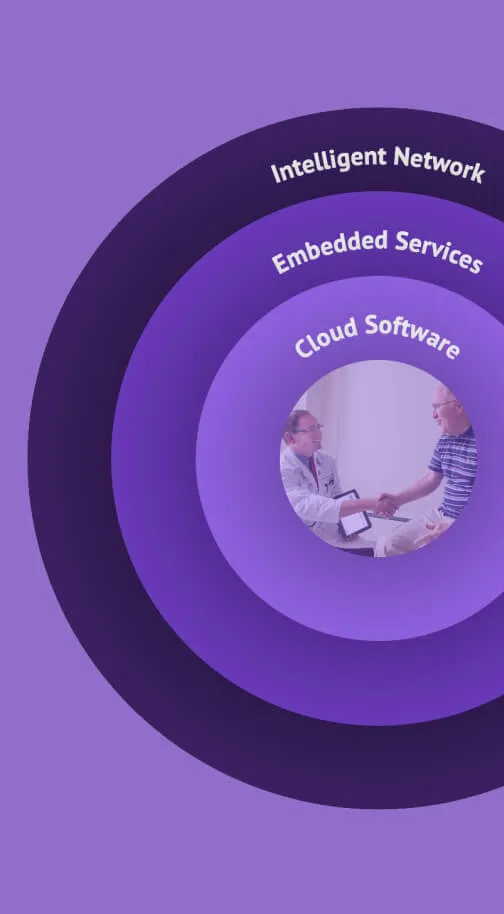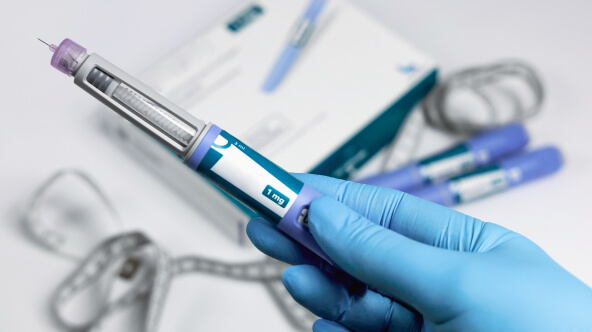athenahealth research explores how patients interact with medical practices
Digital engagement tools are transforming how patients connect with physicians and practices, providing flexibility, convenience, and the control they increasingly expect as healthcare consumers. Through tools like patient portals and mobile healthcare apps, patients can schedule appointments, view lab results, refill prescriptions – and more – with just a few clicks. But what are patients really doing when they use digital engagement tools, and what do they want to be able to do digitally when managing their healthcare?
Results from a cross-sectional nationwide survey administered by athenahealth reveal how patients are using digital tools and the features they most desire in patient portals and apps. Examining these data can help clinicians and healthcare administrators understand what tools to enable for their patients and which ones can help improve practice efficiencies, communication, and patient satisfaction.
Let’s look at how patients are using digital engagement tools and what tools they prefer.
How Patients Are Using Digital Engagement Tools
Patients are increasingly relying on patient portals, mobile apps, and text-messaging reminders to manage their healthcare and are vocal about the features they find most valuable. Previous athenahealth research1 showed rising digital engagement among practices using the athenaOne® platform from 2021-2024 in three primary categories:
1. Access to Care: Increasing numbers of patients are using digital interfaces to book, confirm, reschedule, or cancel appointments without the need for phone calls. Digital check-ins and appointment reminders may help save time for patients, front office staff and clinicians.
2. Financial Activities: More patients are paying bills online and receiving electronic statements, reducing the burden of traditional paperwork and mailing processes. Digital bills sent through portals with email and text reminders, along with other patient digital activities, are also associated with higher patient pay yields.
3. Share Healthcare Information: Patients use portals and other digital tools to access lab results, medical records, and other healthcare-related information at their convenience. Patients also review healthcare information and care plans shared by their clinicians.
We were able to drill down further into the frequency and preference of specific digital actions within these categories to learn more about patient habits and wants for managing their healthcare digitally. To help understand what patients want from their digital tools, we asked 1,000 patients nationwide to rank their preferences and use of digital healthcare tools.
What actions patients are taking with digital tools
When asked about their activity within the three categories above, Analysis of patient responses reveals the most frequent actions patients are taking using their online medical records, patient portals, and mobile apps. Based on a nationwide survey of 1,000 people,2 the top digital actions patients said they took with medical practices in 2024 are:
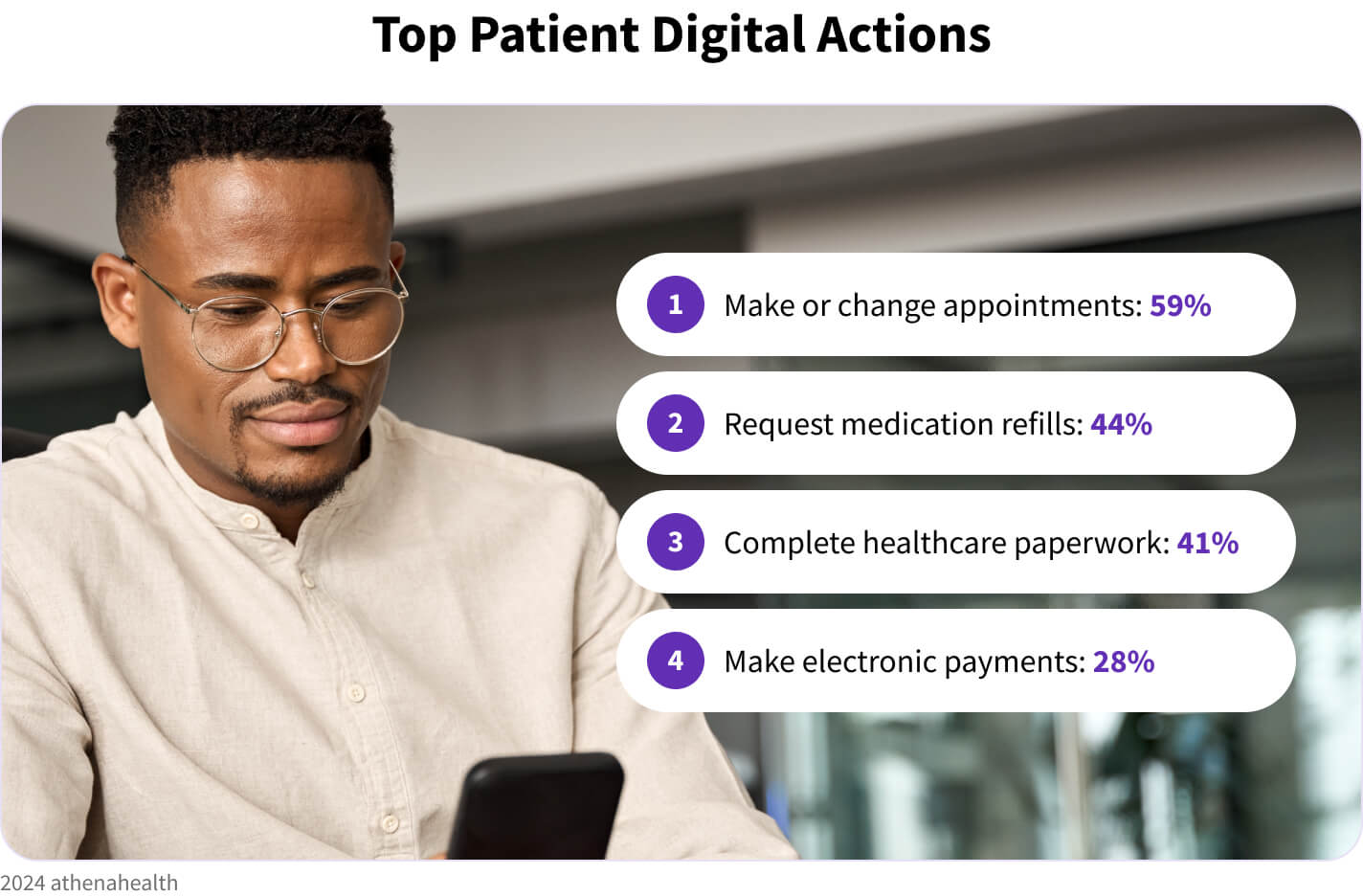
• Making or changing appointments (59%): Patients gain flexibility and convenience by scheduling or adjusting appointments online, while providers may see reduced front-desk workloads and improved operational efficiency.
• Requesting medication refills (44%): Digital refill requests save patients time and help ensure uninterrupted access to medications and can help physicians manage communications through staff roles or batched workloads.
• Completing healthcare forms or paperwork (41%): Patients can complete paperwork faster by typing into digital forms that can also use autofill information saved on their devices, while providers may benefit from improved data accuracy, faster integration into medical records, and the ability to verify insurance information before the visit.
• Making electronic payments (28%): Patients enjoy the convenience of managing healthcare expenses online and connecting their digital wallets, while providers may experience faster payments and reduced administrative tasks.
These activities demonstrate the practical benefits of patient portals, which can reduce administrative friction and empower individuals to take control of their healthcare. They also show room for growth in moving more patients to digitally engage, which tends to correlate to stronger patient satisfaction and loyalty, according to recent Accenture research.
What digital healthcare actions patients prefer
The above statistics show what actions patients are already taking with digital tools. In our nationwide survey, we asked what actions patients like to do digitally vs. traditional methods such as paper or telephone. Here are the top ways patients said they wanted to digitally engage with healthcare practices:
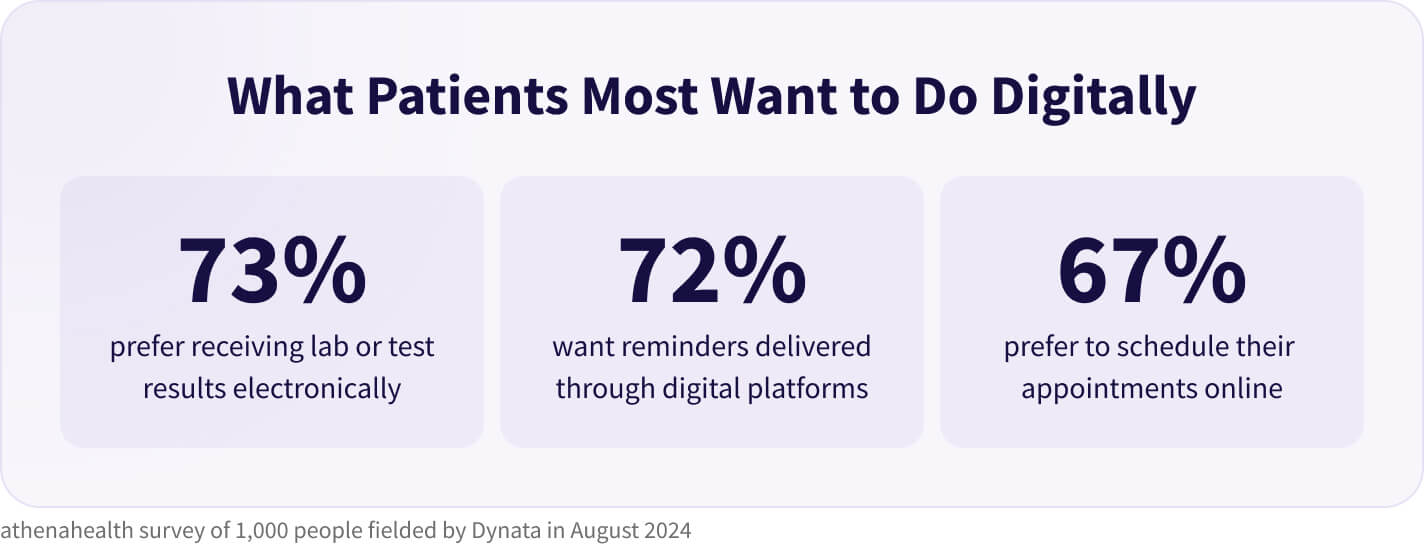
1. To Receive Electronic Lab and Test Results:
- 73% of respondents expressed a preference for receiving lab or test results electronically. Patients may get more control over when to view the results and often receive them faster.
2. To be reminded of upcoming appointments:
- 72% of patients want reminders delivered through digital platforms, which may help them stay organized and reduces the risk of missed appointments.
3. To schedule appointments online:
- 67% of respondents prefer to schedule their appointments online. This functionality can offer convenience and flexibility, especially for patients managing busy schedules. Being able to see the available slots in a schedule helps empower patients to find the spots that work the best for them and help keep providers schedules full as patients self-serve.
These tools are helping patients stay connected and informed, emphasizing the value of accessible and user-friendly digital solutions. Roughly 75% of patients surveyed felt that using digital tools to connect with the healthcare system is somewhat or very important, and more than three out of four (75.8%) patients agreed that digital tools simplify those interactions.
Practices using athenaOne® can assess how digitally engaged their patients are by using the Patient Digital Engagement Index from the athenaOne insights dashboard. This tool allows practices understand their patients’ digital actions over time and to compare their results with other practices in the athenahealth network. By monitoring overall patient digital engagement using this tool, clinicians and healthcare administrators can understand the need for encouraging and empowering patients to self-manage their healthcare and to track how well engagement campaigns, such as text-messaging, may be working with their patient populations.
Popular Digital Tools Among Patients
As part of this 2024 patient survey3, athenahealth examined the digital tools that patients most frequently used, which can help clinicians understand patient priorities for convenience and efficiency. Our data reveals that patient portals (which here broadly means using a computer or mobile app to access their healthcare provider or health record), email, and text messaging were the top three channels used for patient digital engagement:
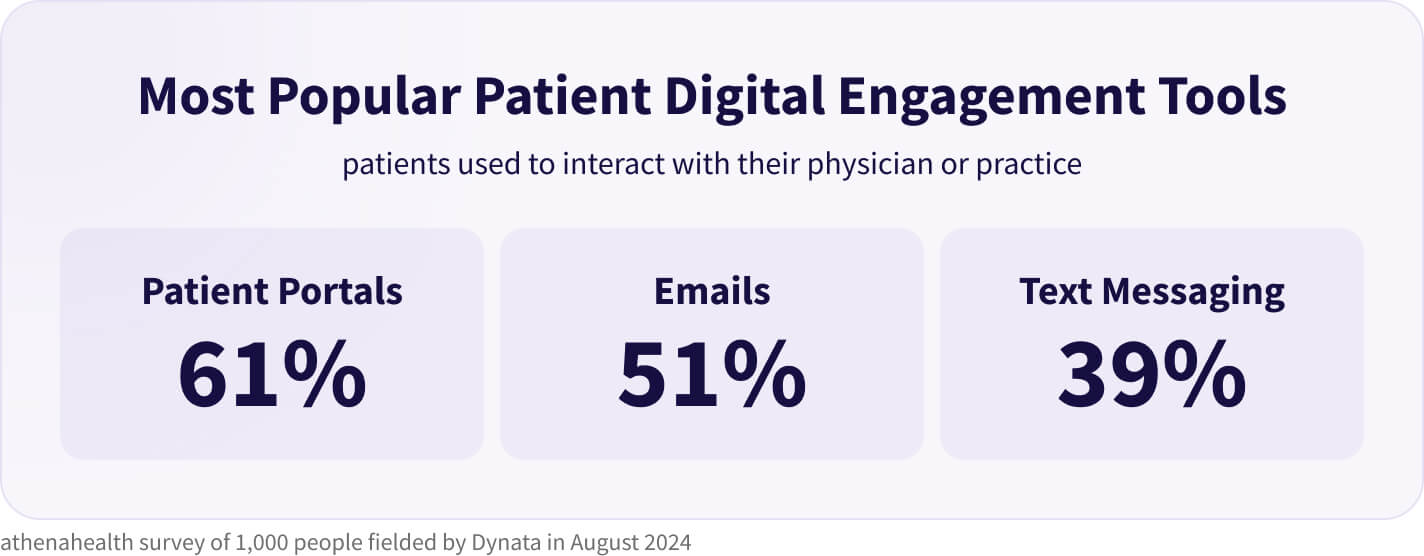
• Patient Portals: 61% of respondents used an online patient portal to access records, schedule or reschedule appointments, and communicate with their clinicians.
• Emails: 51% of patients received updates and reminders from their physicians and providers about their healthcare.
• Text Messaging: 39% of patients used text messages to communicate with healthcare providers.
Using these tools can help clinicians provide better and faster care to their patients. “The patient portal is one that we really advocate for because we feel that it is an incredible value for our patients to have access to information, their records, their lab results,” said Dr. Christopher Apostol of Evans Medical Group. “Quick messaging and response to patient concerns have prevented small problems from escalating into bigger issues.”
Our results showed that patients are using a variety of tools to digitally engage. Although patient portals were the top channel among our data, no single channel emerged as the far and away favorite. This distribution of preferences among patients underscores the need for practices to offer options so patients can choose how they want to communicate with their doctors. Some patients enjoy being reminded through several channels – both text messaging and email reminders, for example – to help them stay on top of their healthcare.
Practices need to pay attention to patient digital preferences and actions
Patient portals and other digital tools are no longer optional; they are integral to modern healthcare delivery. To stay competitive and meet patient expectations, healthcare practices must continue investing in user-friendly, feature-rich digital platforms. athenaOne offers patient-preferred digital engagement tools such as self-check-in, appointment reminders, appointment scheduling, an online patient portal, and the athenaPatient™ mobile app for iOS or Android. And unique to athenaOne customers is the Patient Digital Engagement Index (PDEI), a proprietary measurement tool that allows practices to monitor and evaluate their patients’ digital engagement over time.
PDEI is a key metric within athenahealth’s Insights Dashboard, designed to track patient utilization of all digital tools integrated with our EHR, including those from our Marketplace partners that extend digital engagement functionality. This data is consolidated into a PDEI score for each practice, helping clinicians understand how digitally engaged their patients are.
To explore the 2024 Patient Digital Engagement Research, read our summary of key findings. For a deeper dive into Patient Engagement in the Age of AI, download our white paper, which covers the link between digital engagement and patient loyalty, as well as the barriers to digital engagement and strategies for overcoming them.
Curious about how technology can help your practice engage with your patients digitally? Learn more about athenahealth’s suite of patient engagement tools to help you stay connected to patients.
1. Data from an athenahealth research study of 6,300 athenaOne clinics between 2021 and 2024. All data deidentified prior to analysis.
2. All other data results cited in this article are from an athenahealth survey of 1,000 people nationwide fielded by Dynata in August 2024.
3. athenahealth survey of 1,000 people nationwide fielded by Dynata in August 2024.
